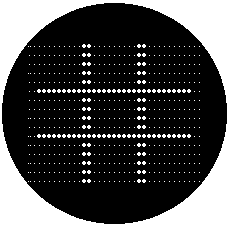No matter if you prefer Xbox, Playstation, Nintendo, or PC, there’s no denying that today’s video games are enormous, highly advanced creations. With their large open worlds, realistic graphics, and engrossing stories, a video game in the 21st century is quite different from a video game in the mid-20th century. The game OXO is the perfect example of this. As one of the first video games ever, OXO has an interesting history and a just as fascinating origin story. From its creation to its instructions to its eventual successors, this guide will tell you all there is to know about A.S. Douglas’s early video game OXO.
3 Facts About OXO
- OXO is one of the first games to electronically display visuals on a screen and one of the first practical uses of artificial intelligence in history.
- OXO could only be played in the University of Cambridge’s mathematical laboratory by permission. It was not available to the public because the EDSAC computer could not be moved, and the game was only truly meant for the purpose of research.
- Some historians are hesitant to label OXO the first video game because it lacks moving, continuously updating graphics.
What Is OXO: Explained

No matter if you prefer
Xbox
, Playstation, Nintendo, or
PC
, there’s no denying that today’s video games are enormous, highly advanced creations.
©New Africa/Shutterstock.com
In 1952, a graduate student at the University of Cambridge named Alexander Shafto Douglas (21 May 1921 – 29 April 2010), also known as “Sandy,” was writing his Ph.D. thesis on human-computer interaction. As part of his thesis, A.S. Douglas decided to create a computer game on the EDSAC (Electronic Delay Storage Automatic Calculator) at the University. The EDSAC was one of the very first stored-program computers in the world, thus making OXO the first graphical computer game.
The EDSAC, created in 1949, was an early vacuum tube-based British computer capable of operating up to 600 instructions per second with its 3,000 tubes. The EDSAC used 32 mercury delay lines, also known as long tanks, each storing 32 words/18 bits. Doing the math, the total memory capacity of the EDSAC was equivalent to about 2 kilobytes. This proprietary serial memory technology could display its contents on Cathode Ray Tube (CRT) monitors — a major development for the time. The EDSAC used 3 CRTs and a display matrix of 35×16 dots. The EDSAC’s input was a five-hole punched tape, and the output was through a teleprinter or CRT. As such, A.S. Douglas’s actual program for the OXO game was originally punched on nothing more than a strip of paper.

Thanks to his ingenious invention, A.S. Douglas’s thesis was a total success. He earned his Ph.D. with ease and then kicked off his lasting career in the science industry — never again to program another video or computer game, depending on what you want to call OXO.
How to Play OXO
OXO worked much the same as tic tac toe, also known as naughts and crosses, the old-school non-computer game that people play by placing Xs and Os on a 3×3 grid using pen and paper. Like naughts and crosses or tic tac toe, OXO was a turn-based game that required the user to go head-to-head with the EDSAC, each player taking turns placing either an X or an O on the screen using a rotary telephone controller. The player’s move would show up on the screen, then the computer’s move would follow. The display updated every time the state of the game changed, allowing users to make their next move.

OXO Game Release History
Technically, OXO never saw an “official” release like you might imagine for the latest Call of Duty or Animal Crossing game. That’s because it was created for what essentially boils down to a school project. However, the game was available to play for anyone in and around the University of Cambridge as long as they had special permission.
- The Electronic Delay Storage Automatic Calculator (EDSAC) was built between 1946 and 1949
- OXO was created in 1952
- The EDSAC — and, as a result, OXO — were retired in 1958
OXO Game: End of Play
The OXO game came to an end when the EDSAC did. Back in 1958, when the University of Cambridge’s Mathematical Laboratory retired the Electronic Delay Storage Automatic Calculator, OXO went with it. However, A.S. Douglas’s game was recreated countless times on countless different devices in the decades since. In fact, there are still OXO simulators available for play today. This doesn’t change the fact that the original was retired nearly 65 years ago.
NEXT UP…
- The Complete History of Linux: Everything You Need to Know
- Grace Hopper – Complete Biography, History, and Inventions
- Meet Angela Ruiz Robles – Complete Biography, History and Inventions
The image featured at the top of this post is ©Alexander Douglas, Public domain, via Wikimedia Commons.







